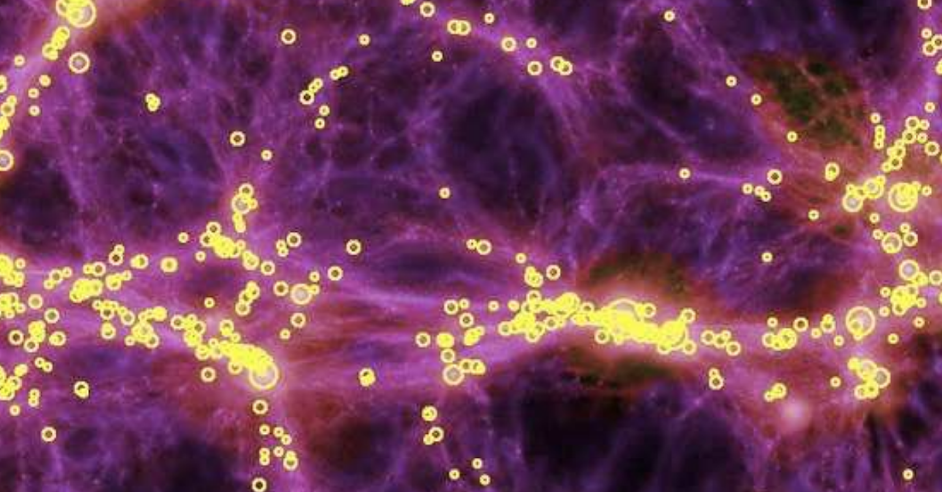Tiziana Di Matteo Awarded NASA Grant to Study Black Holes and Gravitational Waves
By Theresa Gabrielli
Media Inquiries- Associate Dean for Communications, MCS
- 412-268-9982
Professor of Physics Tiziana Di Matteo has been awarded a grant from the Astrophysics Theory Program at NASA to make predictions about colliding supermassive black holes and test Einstein’s theory of gravity with observations of a space-based gravitational wave detector. The grant will allow Di Matteo to study the growth of massive black holes across cosmic history by carrying out simulations of galaxies and black hole formation across the full history of the universe.
Black holes have made the transition from theoretical textbooks and science fiction movies to being key players in our cosmic history. They find themselves at the center of modern astrophysics, cosmology and galaxy evolution. Despite their importance to galaxy formation and evolution, we still do not know exactly how massive black holes formed and grew across cosmic history.
“At the center of each galaxy, there is a powerful black hole that’s millions or billions of times more massive than the sun,” Di Matteo said. “These galaxies move toward each other, and sometimes they collide with each other. Observing the gravitational waves produced during these super-collisions is what will help us understand whether Einstein was right in these extreme environments.”
Observing such events will require multiple next generation detectors, facilities and X-ray satellites. Di Matteo will be working in particular with a gravitational wave detector called the Laser Interferometer Space Antenna (LISA), which is scheduled to launch in 2034 by the European Space Agency in partnership with NASA. Detectors like LISA intend to rapidly mature our knowledge of galaxies and their black holes from the early universe to the present by observing and collecting multi-messenger signals.
Multi-messenger astrophysics is a brand new field that combines observations of light, gravitational waves, and astro-particles. Massive black hole collisions are the ultimate multi-messenger signals, as before and after the gravitational wave signal, astrophysicists will see matter and light in the galaxy falling when close to a black hole. Di Matteo will work alongside a worldwide consortium of astrophysicists who analyze vast amounts of data to detect these cosmic signals for the first time.
“Combining different information from gravitational waves and light will allow us to reshape our understanding of the physical processes that govern astrophysical systems, and to probe fundamental questions about the nature of gravity and the most energetic events in the universe,” she said.
Every decade in astronomy had been defined by the increasing realization that black holes are extreme and violent, and are a fundamental constituent of our universe. The first detection of a gravitational wave signal in 2016 involved the collision of two massive black holes. Earlier this year, the first image of a black hole event horizon taken by the Event Horizon Telescope was released and went viral.
“With these new opportunities, this new era of discovery in astrophysics, come new challenges, including highly heterogeneous, high volume datasets, globe-spanning interdisciplinary teams, extraordinary breadth and depth of domain-specific knowledge to anticipate, model and interpret observations,” said Di Matteo. “It’s an area that’s blooming like crazy. The field is opening up tremendously and black holes open a new window into that line of research.”
“Gravitational wave physics is the physics of the future,” said Professor and Physics Department Head Scott Dodelson. “Tiziana has long been a leader in this field, so we are thrilled that she will be getting the support she needs to carry out pioneering research in this area. With Tiziana and new faculty member Carl Rodriguez, CMU is on track to be a center for gravitational wave and black hole research for decades to come.”
 This cosmological simulation depicts the positions of black holes (circled) within a projected baryonic density field.
This cosmological simulation depicts the positions of black holes (circled) within a projected baryonic density field.